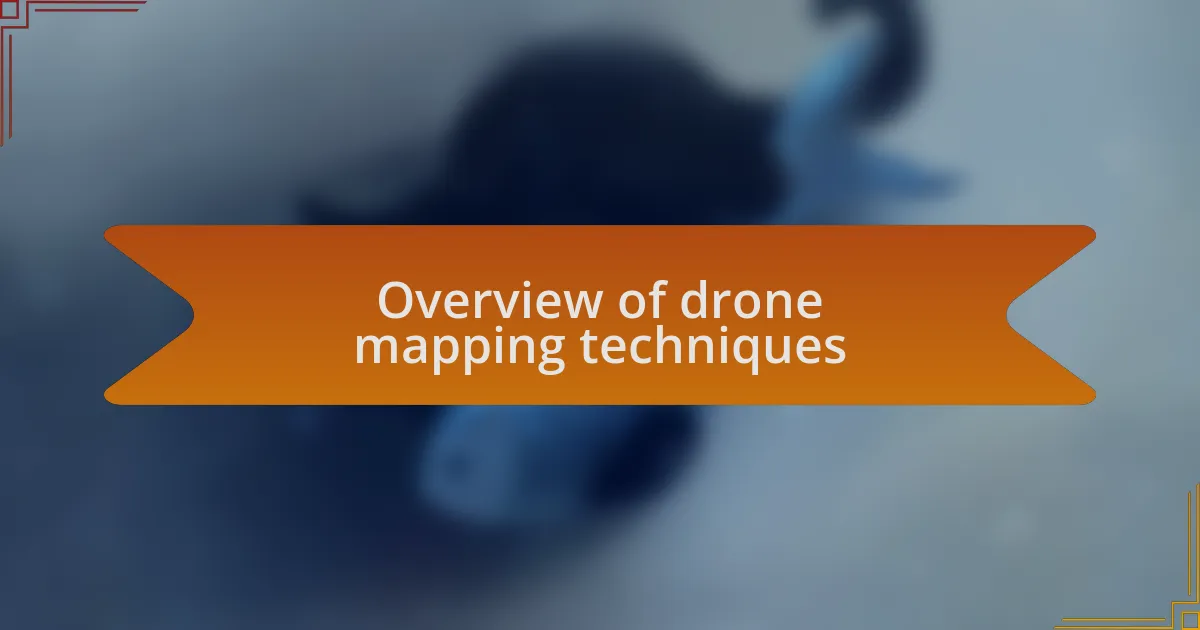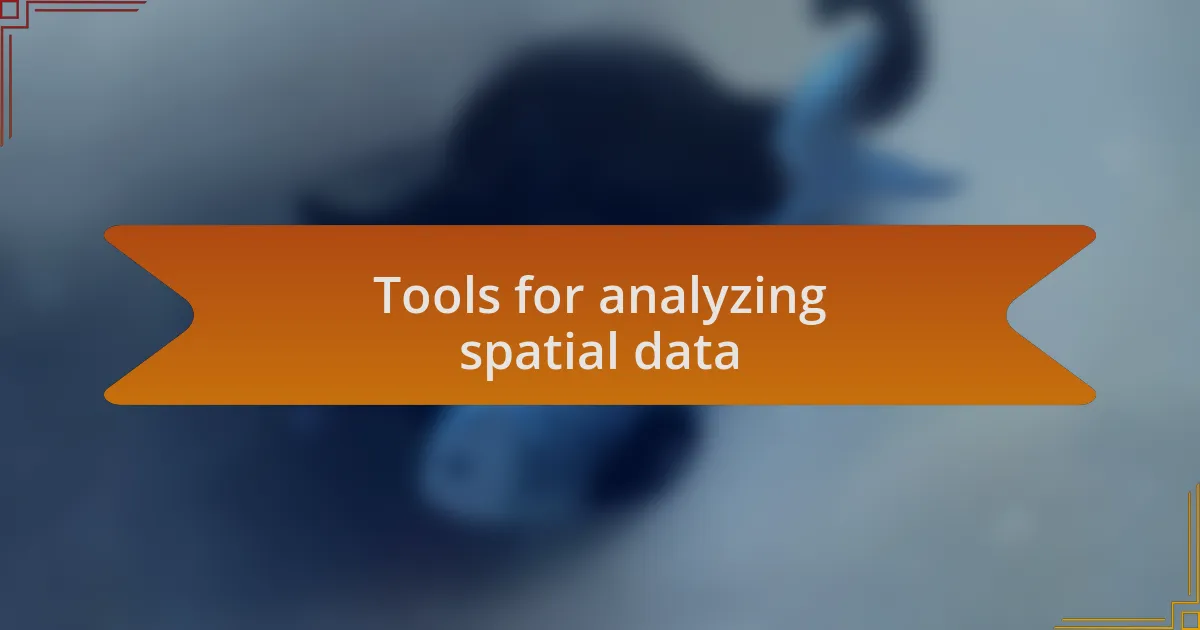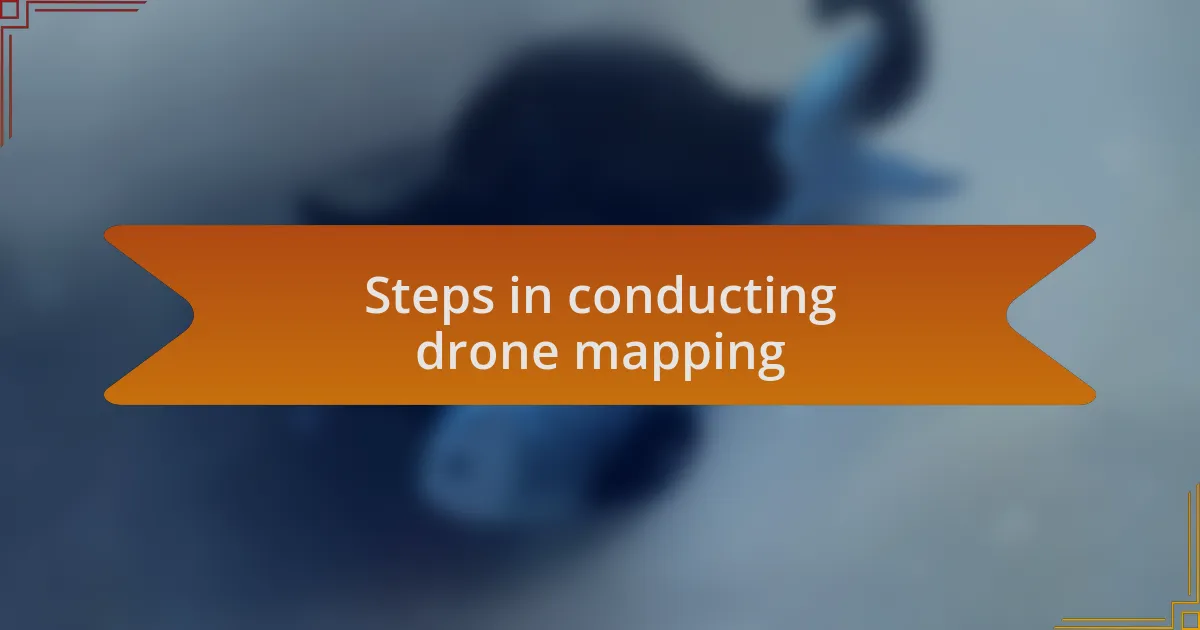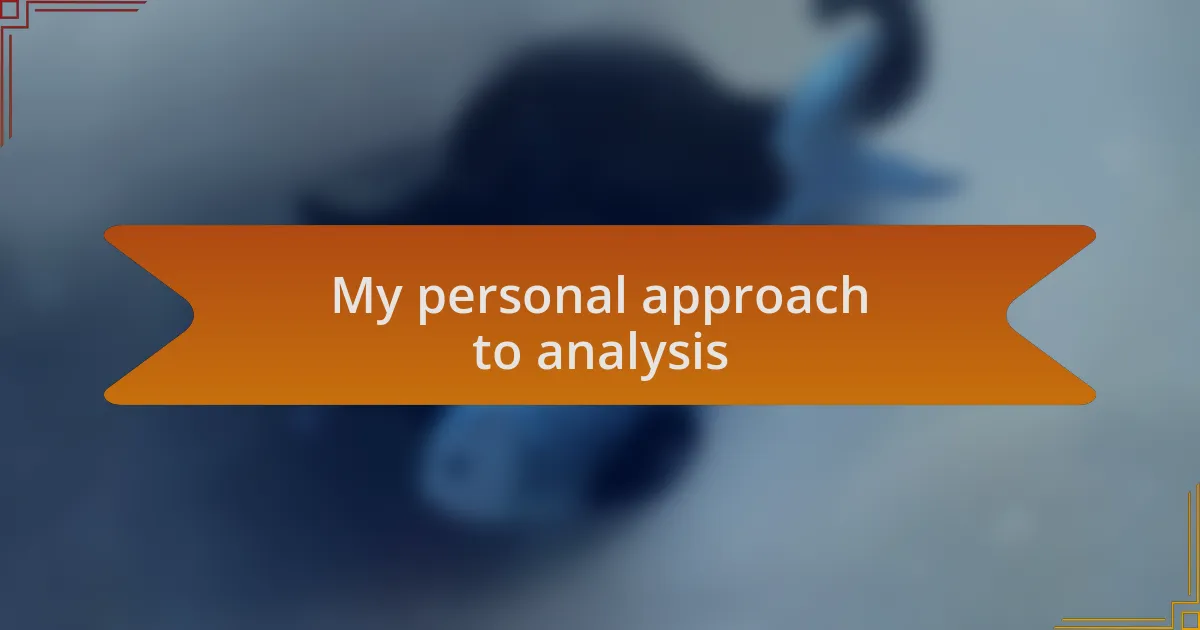Key takeaways:
- Spatial data analysis reveals patterns and insights that tell a story about environmental dynamics.
- Drone mapping enables efficient data collection, empowering local communities and enhancing environmental management.
- Techniques like photogrammetry and LiDAR offer precise methodologies for understanding landscapes and planning.
- Effective tools such as ArcGIS and QGIS, along with automation through Python, can significantly enhance the analysis of spatial data.

Understanding spatial data analysis
Spatial data analysis is the process of examining locations and relationships in geographical data to uncover patterns and insights. I remember my first encounter with spatial data; the thrill of seeing how drone imagery could reveal changes in land use was eye-opening. Have you ever thought about how much information lies in the details of a map?
As I delved deeper into this field, I realized that analyzing spatial data isn’t just about numbers and coordinates. It’s about storytelling—every data point contributes to a narrative about the environment and its dynamics. This realization transformed my perspective; I began to appreciate the emotional weight behind the maps I was creating.
While tools and techniques vary, the essence of spatial data analysis remains the same: it’s about connecting the dots. I often found myself pondering, how can we leverage this data to make informed decisions and drive positive change? Each analysis is a chance to influence the future, making it an exhilarating journey of discovery.

Importance of drone mapping
Drone mapping has revolutionized how we perceive and interact with our environment. I vividly recall a project where a drone captured the intricate details of coastal erosion in Zanzibar. The clarity of the imagery allowed us to identify critical areas for preservation that might have gone unnoticed otherwise. It’s moments like these that underscore the importance of drone mapping in environmental management.
What amazes me is the speed and efficiency with which we can collect vast amounts of data. Traditional mapping methods often require significant time and resources. In contrast, drones can survey expansive areas in just hours, providing us with timely information that can significantly impact decision-making. Have you ever wished for a tool that gives you real-time insights? This is the power of drone mapping.
Moreover, the accessibility of drone mapping empowers local communities to engage in data-driven discussions about their land. I have seen communities come together, armed with maps generated by drones, to advocate for their needs and protect their resources. This grassroots involvement not only fosters a sense of ownership but also highlights the vital role drone mapping plays in promoting sustainable development. Wouldn’t you agree that empowering communities leads to stronger foundations for the future?

Overview of drone mapping techniques
Drone mapping techniques encompass a variety of methodologies, each tailored to meet specific objectives. I find it fascinating how photogrammetry, for instance, uses overlapping aerial images to create 3D models of landscapes. On a recent project, I experienced firsthand how this technique enabled us to visualize terrain changes over time, offering invaluable insights for conservation efforts.
Another commonly applied method is LiDAR (Light Detection and Ranging), which employs laser pulses to measure distances and create accurate topographical maps. I remember being astounded during a demonstration when we could see the dense vegetation of Zanzibar’s forests stripped away, revealing a detailed ground surface beneath. Can you imagine the potential for environmental planning and infrastructure development when we have such precision at our fingertips?
Moreover, the integration of multispectral imagery adds another layer of depth to drone mapping. This technique captures data beyond the visible spectrum, allowing us to assess plant health and land use. I still reflect on a project where this data helped farmers optimize their crop yields by identifying areas in need of better irrigation. Isn’t it incredible how understanding our environment in such detail can lead to smarter agricultural practices?

Tools for analyzing spatial data
When it comes to tools for analyzing spatial data, ArcGIS has been a standout in my experience. Its comprehensive capabilities for managing, analyzing, and visualizing spatial information make it invaluable in drone mapping projects. I recall a challenging mapping task in Zanzibar where ArcGIS enabled our team to create intricate heat maps that revealed not just land use patterns, but also areas prone to flooding. This tool really turned complex data into an accessible narrative that we could easily convey to local stakeholders.
Another exceptional tool I’ve found is QGIS, which is open-source and offers a high level of customization. I was particularly impressed during a workshop when we explored its features for spatial analysis, such as proximity calculations and terrain modeling. I remember thinking how empowering it felt to manipulate variables and instantly see the impact on our data visualization. Isn’t it amazing to have such flexibility at your fingertips?
Lastly, I’ve started incorporating Python scripting into my analyses, especially for automating repetitive tasks and conducting complex analyses. I once created a script that grouped large datasets based on elevation, saving us hours of manual work. This not only enhanced our efficiency but also sparked a creative problem-solving process that I had not expected. Doesn’t it make you wonder how automation could transform the way we handle spatial data moving forward?

Steps in conducting drone mapping
After determining the mapping objectives, the next step is to conduct a site assessment. During one of the projects in Zanzibar, I walked the intended flight path to identify potential obstacles like trees and buildings that could interfere with accurate data capture. It was eye-opening to realize how physical conditions can drastically affect drone flight performance. Have you ever considered how something as simple as a tree could influence mapping outcomes?
Following the site assessment, planning the flight path is crucial. When I first used mapping drones, I didn’t realize how significant this step was. I remember meticulously plotting points, ensuring consistent overlap and altitude for the imagery collection, and thinking about how even small adjustments could lead to vastly different results. The thrill of watching the drone execute my carefully plotted flight plan felt so rewarding; it brought my vision to life right before my eyes.
Lastly, data capturing comes into play, where I found real excitement and anticipation. I remember feeling a mix of exhilaration and nervousness as I pressed the take-off button, knowing the importance of this moment. Watching the drone ascend, capturing images while I followed its path, made me appreciate the technology’s capability and precision. Isn’t it fascinating how technology can transform our ability to see the world from a new perspective?

My personal approach to analysis
When I dive into analyzing spatial data, I start by immersing myself in the collected imagery. Each image tells a story, and it feels like piecing together a puzzle. I recall a moment when I examined drone footage of a coastal area in Zanzibar—every wave and shadow seemed to share vital information about the shoreline’s health. Have you ever felt lost yet excited while trying to decode a deeper meaning behind visual data?
Next, I rely heavily on software tools to help interpret that imagery. Tools like GIS (Geographic Information Systems) provide a robust framework for analysis. When I first experimented with GIS, I was captivated by how layers of data could reveal patterns I previously overlooked. It sparked a realization: with the right tools, every detail, no matter how minute, could lead to significant findings. Isn’t it incredible how technology can enhance our understanding of complex landscapes?
Finally, I integrate my findings with local knowledge and context. I remember discussing data insights with local experts who offered perspectives I hadn’t considered. Their input shaped my analysis, reminding me that data isn’t just numbers; it’s deeply connected to the community and environment. How often do we miss out on valuable insights by not incorporating diverse viewpoints? This holistic approach enriches my analysis and ultimately leads to more comprehensive conclusions.